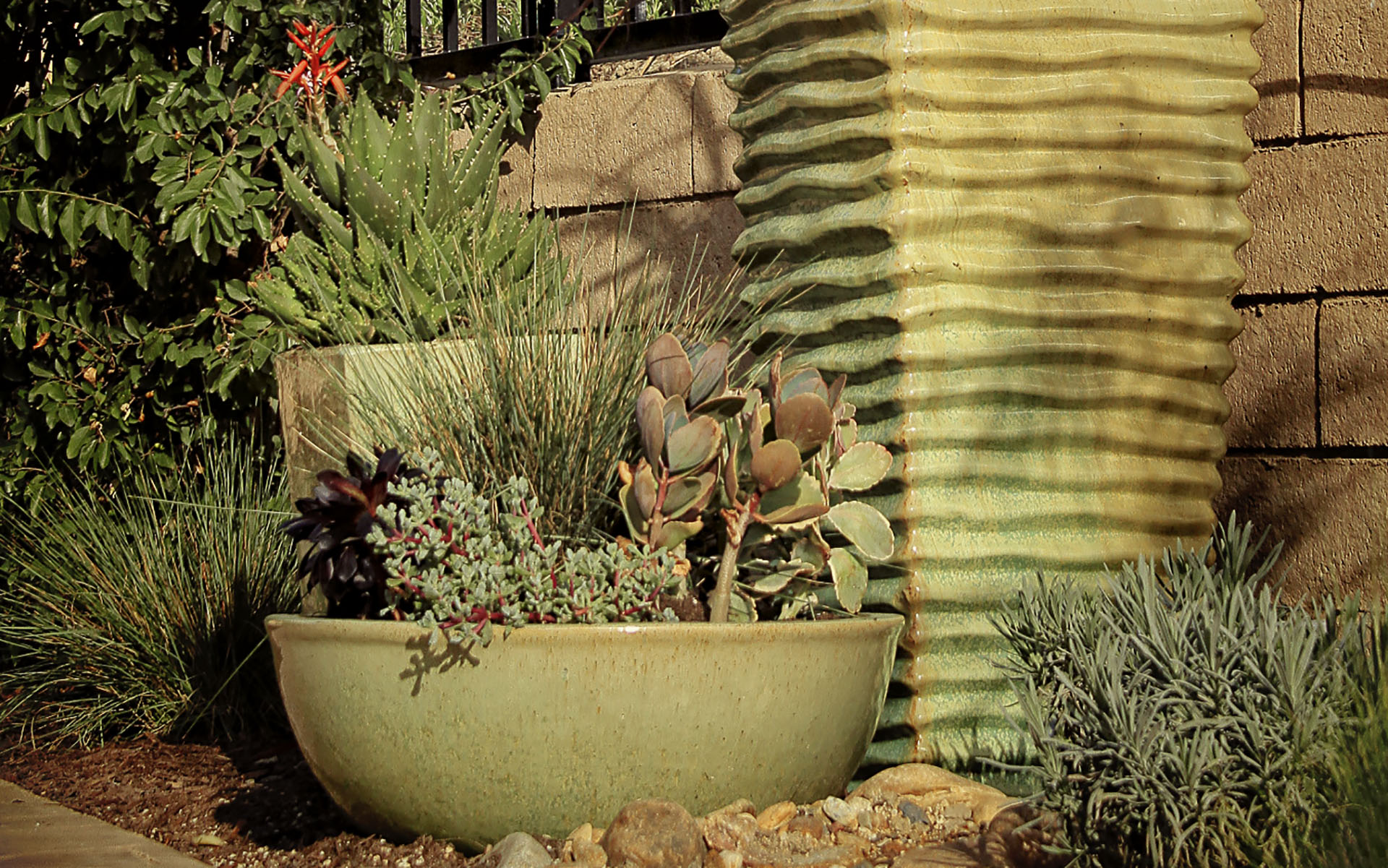
10 Apr Sustainable Landscapes
What is a Sustainable Landscape?
A Sustainable landscape is one that creates an attractive environment with minimal use of resources. It is designed to fit each particular site and climate so that it can virtually take care of itself using sustainable techniques that will not deplete or damage natural resources. Some of the most common and innovative sustainable features for use in a landscape include; water saving systems, drought tolerant plants, permeable surfaces, water harvesting systems, and green roofs to name a few.
Water Saving Irrigation
Whether you are landscaping a new home or redoing your existing landscape, water savings should be at the top of your priority list. The latest in water saving irrigation systems center their technology on ‘SMART’ controllers that regulate how long your system will run and adjust to existing weather conditions. Low-flow rotating sprinkler heads which use 1/3 the amount of water compared to existing nozzles, and drip irrigation systems which put water straight into the soil, at the root, where it can be absorbed most effectively and not evaporate, are the framework of the system. Learn more on our Focus on Water page.
Drought Tolerant Plants
The benefits of these systems are further enhanced by designing and planting California natives and arid plants suited to each particular site and climate. Done thoughtfully you can have a beautiful landscape and save water at the same time.
Permeable Surfaces
Tired of watching water rush across the pavement picking up everything from oil and grease spills to chemical fertilizers? Then think about incorporating permeable surfaces into your next landscaping project. Pervious pavements allow infiltration of water into the soil. Capturing rainwater into a network of voids and allowing it to slowly percolate into the underlying soil, resulting in reduction of runoff and less pollution to our oceans.
Rain Water Harvesting
Old is new again. Water harvesting is an age old system that is being rediscovered as an alternative or as an adjunct to the use of the public water system. The “Cistern System” is set up to collect rainwater from the gutter system and reused in your irrigation. Different size systems are available for homes or large business centers. There are also “below grade’ systems that are not visible and are very effective.
Living Roof
A green roof is an extension of your home or business and involves the creation of a contained green space on top of a structure. Benefits range from providing insulation and conserving water to food production, improved aesthetics and improved air quality. Think literally “outside the box”. Consider the new possibilities for that old static roof deck or as an alternative to conventional re-roofing!
Light The Way
Electrical consumption and costs are rising every year. Switching to an LED (light emitting diodes) system can help. LED’s consume 92% less energy than your standard halogen bulb, so a 650 watt system converts to a 95 watt system. While there are higher up front costs to install an LED system, the operating cost are minimal and the savings substantial over time. You can install a new system or retrofit an existing system. For a free evaluation, give us a call.
Green Materials
Additional ideas which round out the sustainable building ideology include: the use of ‘green’ materials, buying locally produced products and patronizing local businesses to reduce our carbon footprints All these are solutions and alternatives to the way we view our built environment and suggest a new way to look at the way we overuse our limited resources. Applying any one or more of these ideas will not only help you save money but will help our collective environment. You will be surprised at the beauty it can sustain as well.



